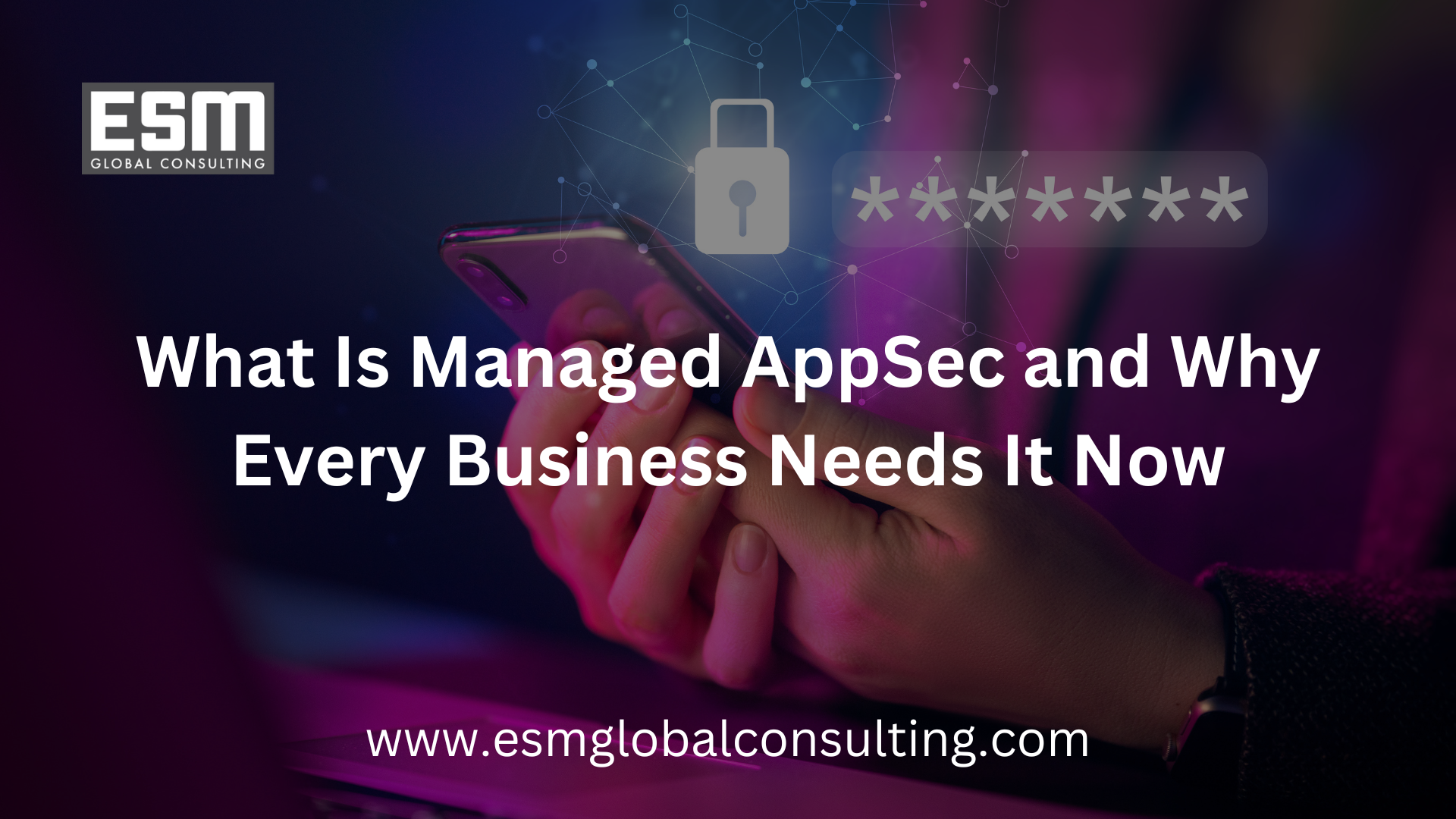What Is Managed AppSec and Why Every Business Needs It Now
Introduction
In today’s hyper-connected world, applications are the backbone of business operations. Whether it’s a customer-facing mobile app, a cloud-based SaaS platform, or internal enterprise software, applications are under constant threat from cyberattacks. This is where Managed Application Security (AppSec) comes in—a proactive, end-to-end solution that secures your software throughout its lifecycle.
What Is Application Security (AppSec)?
Application Security, or AppSec, refers to the practice of identifying, fixing, and preventing security vulnerabilities in software applications. Traditional AppSec focuses on penetration testing and secure coding, but as threats evolve, so must the defenses.
Managed AppSec takes this further by integrating security continuously throughout the development and deployment pipeline.
What Does Managed AppSec Involve?
Managed AppSec typically includes:
Static & Dynamic Code Analysis
Continuous Vulnerability Scanning
Threat Modeling & Risk Assessment
Remediation Guidance & Support
Security Patching & Updates
Compliance Monitoring
With Managed AppSec, ESM Global Consulting delivers a comprehensive, outsourced security service that monitors, detects, and mitigates threats in real time.
Why AppSec Is Mission-Critical Today
Cyberattacks are not slowing down. With the rise of APIs, microservices, and cloud-native development, application layers have become the prime target for threat actors. Without a dedicated AppSec strategy, your business is essentially leaving the front door open.
Key Benefits of Managed AppSec
24/7 Monitoring & Threat Detection
Faster Incident Response Times
Reduced Development Delays
Lower Compliance Risk
Improved Customer Trust
Cost-Efficient Security Management
Common Threats That Managed AppSec Prevents
SQL Injection
Cross-Site Scripting (XSS)
Broken Authentication
Insecure APIs
Software Supply Chain Attacks
Signs Your Business Needs Managed AppSec
Your app handles sensitive data (PII, financial, health)
You’ve failed a recent security audit or pen test
Your team lacks in-house AppSec expertise
You’re scaling rapidly with limited security infrastructure
You're subject to regulations like HIPAA, PCI-DSS, or GDPR
How ESM Global Consulting Delivers AppSec Excellence
At ESM, we embed security into your entire software lifecycle. Our experts use cutting-edge tools, AI-driven analytics, and industry best practices to ensure vulnerabilities are detected and mitigated before they become breaches. Our approach isn’t reactive—it’s relentlessly proactive.
Conclusion
Application security is no longer optional. It’s foundational to your business’s survival and success. Managed AppSec gives you the advantage of expert-driven, always-on protection without burdening your internal teams. With ESM Global Consulting, your applications don’t just run—they run securely.
FAQs
Q1: How is Managed AppSec different from traditional penetration testing?
A: Penetration testing is periodic and often reactive, while Managed AppSec provides continuous, proactive protection across your software lifecycle.
Q2: Is Managed AppSec suitable for small and medium-sized businesses?
A: Absolutely. SMBs are increasingly targeted by attackers and often lack the in-house expertise. Managed AppSec fills this gap affordably.
Q3: Can Managed AppSec help with compliance?
A: Yes, it supports compliance with regulations like GDPR, HIPAA, SOC 2, and PCI-DSS through continuous monitoring and documentation.
Q4: How quickly can Managed AppSec be deployed?
A: Depending on your current infrastructure, ESM can typically begin onboarding within days and provide full coverage within weeks.
Q5: Does Managed AppSec slow down development?
A: On the contrary—it often accelerates development by catching issues early, reducing costly rework and delays.


